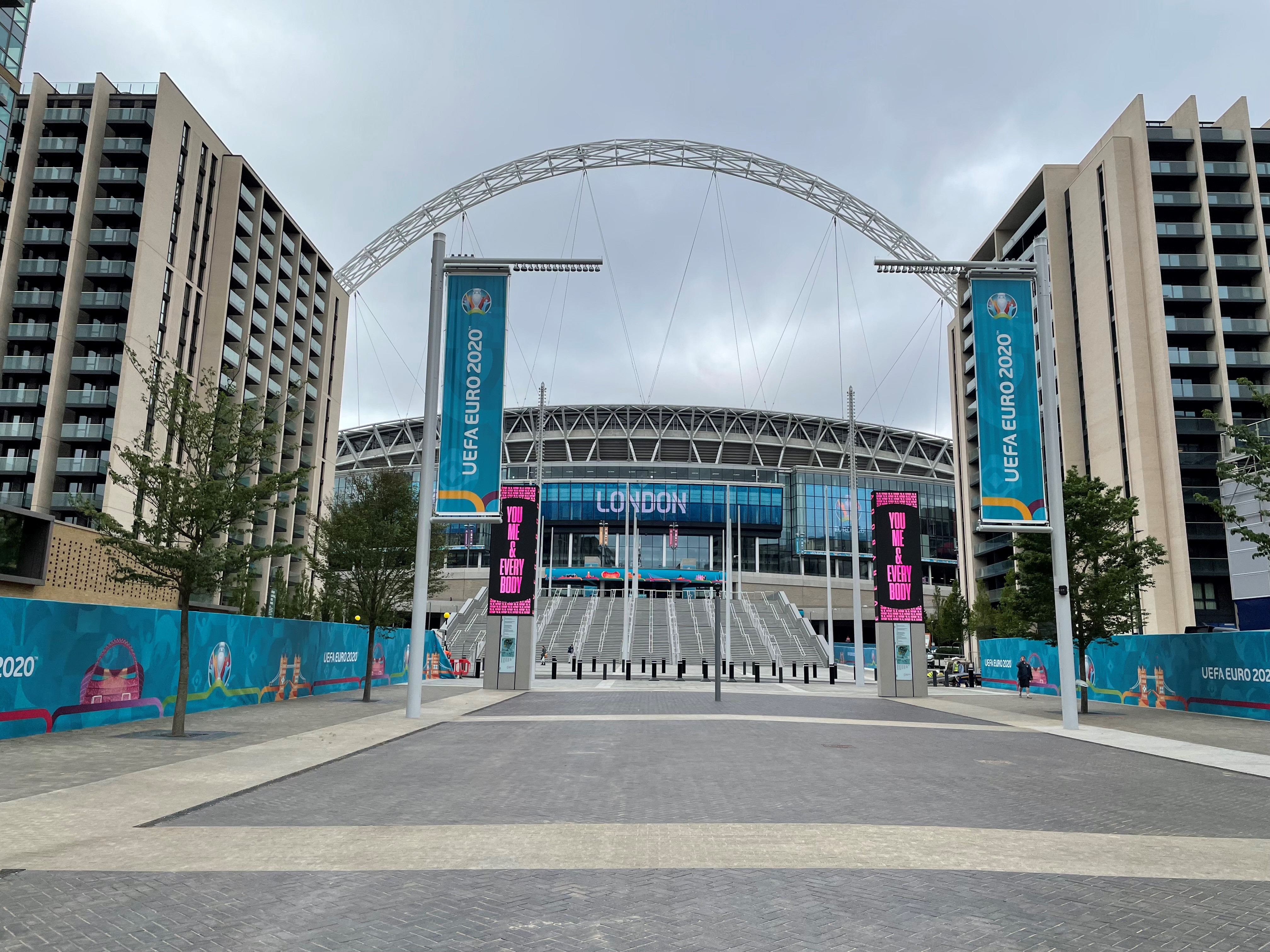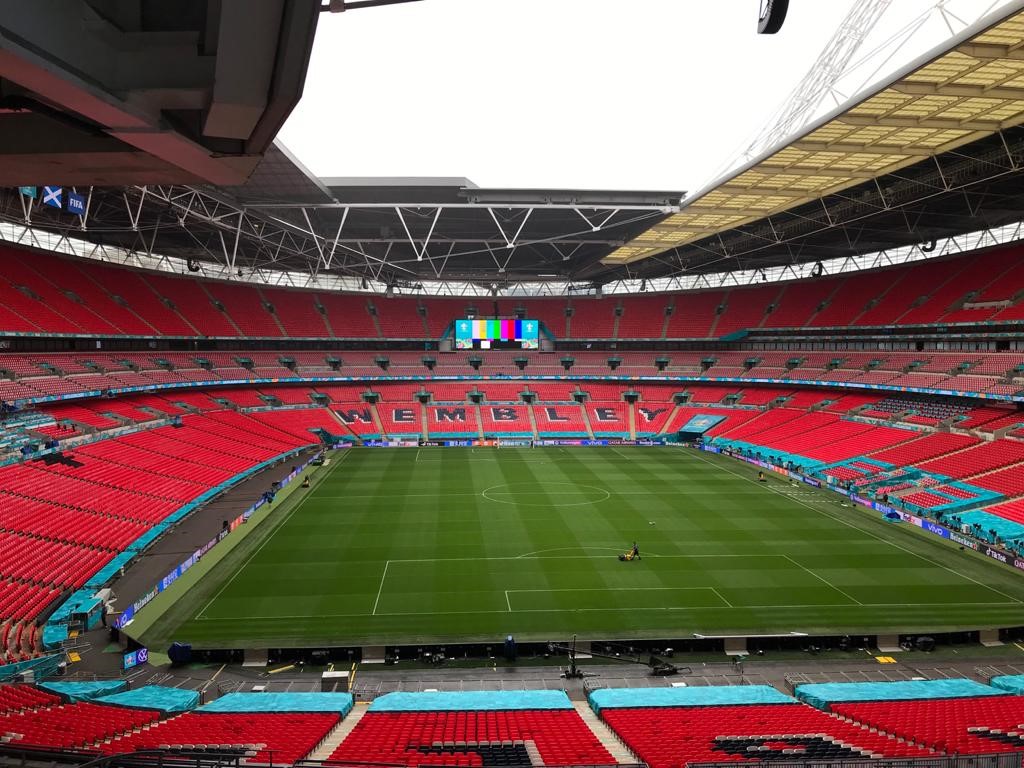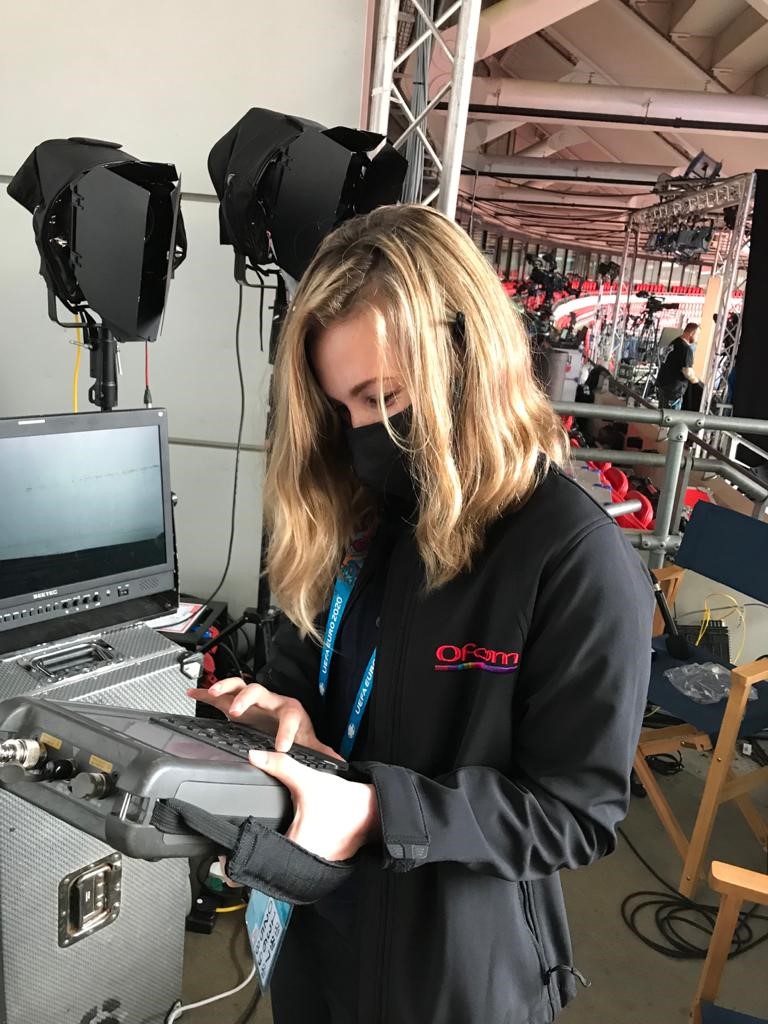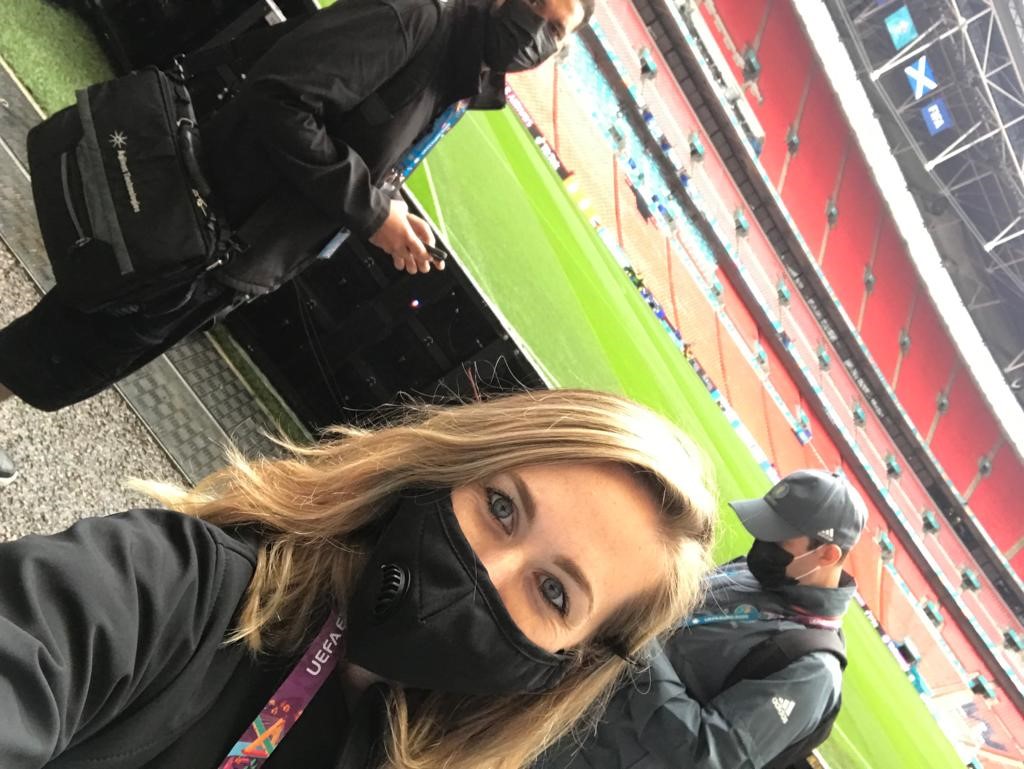Over 20 million UK viewers tuned in the recent Euro 2020 match between England and Scotland that took place at Wembley. And thanks to Ofcom’s help, the match was shown even further around the world by a number of international broadcasters.
Our programme-making and special events (PMSE) team, supported by our Spectrum Assurance colleagues play a key role in helping these broadcasts to go smoothly, by making sure the relevant equipment and technology works properly and safely.
A sporting event on this scale is attended by on-site staff as well as the respective broadcasters, and they will all need to use equipment such as wireless microphones, cameras, in-ear monitors and walkie-talkies.
Each piece of kit uses its own frequency on the radio spectrum, and these need to be managed carefully to make sure they don’t interfere with each other, or with any other technology used on or near each venue.
For our engineers, preparing for an event like a major football match involves a long day.

On Friday, our spectrum planning engineer Janelle Jones arrived at a (very rainy) Wembley at 9am. In addition to the processes typically followed for a job like this, there are the extra procedures required to operate under Covid-19 protocols (hence Janelle wearing a mask in our photos).
After arriving, Janelle met with our senior spectrum specialist, Gregory Smith. He oversees the planning and coordination alongside UEFA’s frequency management team and has been on site at Wembley for almost all of the championships so far, ‘testing and tagging’ equipment, creating frequency licences and clearances, and mitigating any on-site interference.
The first task for our duo was to meet the UEFA coordinator at the frequency management cabin, and discuss what the day will look like. Then it was time to get inside the stadium and start testing and tagging equipment that hadn’t been done on previous days.

Testing and tagging involves identifying equipment that is being used on the day, checking that an individual piece of kit is using the frequency that has been allocated to it, and then tagging it with a sticker to confirm it has been tested and is okay to use.
This typically involves using a piece of technology called a spectrum analyser – as well as our team needing to look out for any pieces of equipment that don’t have a sticker attached, so they can check if they’re being used without a spectrum allocation.

As you’d expect for a sports event of this scale, there’s lots of equipment in use. So, it’s up to our team to speak to the respective broadcasters and communications teams so they can locate any equipment that hasn’t already been tested.
And with broadcasters arriving throughout the day, it’s important to keep track of who’s coming and going – and even more complex doing all this under Covid-19 protocols (and in the pouring rain!) while those broadcasters are getting themselves set up in time for the big kick-off.
About two hours before kick off, as fans started to trickle in to the stadium, our team spent most of their time at pitch side, observing the equipment being used for pre-match interviews, as well as keeping an eye on the nearby outside broadcast compound, in case any interference was brought to their attention.

Our team – including Ofcom Spectrum Assurance colleagues Colvin Hazzard and Jayesh Dudhia, who were on shift later in the day – did receive one alert of reported interference, so set out to investigate. Using the spectrum analyser, they narrowed in on the area of spectrum being affected, with Gregory also using a directional aerial antenna to try to track down the source. They monitored the spectrum for about an hour, but the spike of interference didn’t return.
The broadcaster in question commented that it was great to have our team on site to investigate, since if that wasn’t the case the broadcaster would need to locate the issue themselves, which is often very difficult - especially if the event is live.
Fortunately, there were no other interference cases reported and the match went pretty smoothly (at least off the pitch!)
Our team will be present at Wembley and Hampden Park throughout the tournament, making sure each game hosted at these venues goes without a hitch. So if you’re tuning in to the match from your comfy sofa, spare a thought for the Ofcom team working in all weather to make sure viewers like you are able to see it.
What is spectrum?
You can’t see or feel radio spectrum. But any device that communicates wirelessly needs spectrum – such as televisions, car key fobs, baby monitors, wireless microphones and satellites. Mobile phones use spectrum to connect to a local mast so people can make calls and access the internet.
Why does Ofcom manage spectrum use?
Only a limited amount of spectrum is available, so it needs to be managed carefully. Certain bands of spectrum are also used for different purposes. For example, mobile companies use different parts of the spectrum to TV companies. So, it needs to be managed to prevent services interfering and causing disruption to people and businesses.





